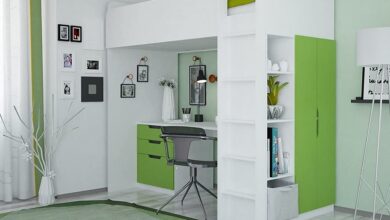What is bioclimatic arquitecture?

At a time when the objective of all human activity is to take care of the environment, the concept of bioclimatic housing is the answer that architecture offers us to live in greater harmony with the environment.
One of the current objectives of any human activity is to take care of the environment and make better use of the resources that we have within our reach. We have the proof in the new renewable energies, the use of vegetable fertilizers in our crops or even the presence of vehicles that run on biodiesel.
This objective covers all areas of our activity, so it is logical that the concept of traditional architecture has also evolved, influenced by what has come to be called bioclimatology. This discipline proposes a personalized housing design according to the climatic conditions of the environment . The new bioclimatic buildings take better advantage of the path of the sun, the rain that has fallen, the presence of vegetation and other elements of the environment to reduce the environmental impact of the home, improving its energy rating.
Elements of bioclimatic architecture
Due to the greater use of natural resources pursued by bioclimatic constructions, there are a series of fundamental elements for their development and approach.
One such element is solar orientation. Depending on how the sun falls on the ground, it is possible, through a correct orientation of the house, to make better use of that energy to heat the house in winter and avoid the most intense heat in summer. An approach that takes into account both the radiation and the conductivity of the home, reinforced with the necessary thermal insulation to achieve the best comfort results.

This section also takes into account the prevailing winds, which can take heat away from the home in winter. This does not imply isolating the house from all sources of air, since ventilation is essential for a suitable environment. It is also common to study the different air flows inside the home, since these will replace the use of air conditioning and heating at times when it is necessary, optimizing the energy performance of the home.
In all this approach, the microclimate of the area where the house is going to be used is also considered. In other words, a house on the beach in a Mediterranean area is not the same as in an inland mountain area or on a plain where vegetation is not abundant. For this reason, during the design phase of the home, parameters such as the average temperatures of the area, sunny days, rainfall, winds, etc. are always taken into account.
Finally, although we are talking about bioclimatic construction, it is obvious that functionality has to be present in the home. It is useless to make the most ecological bioclimatic house in the world if it is not comfortable and functional, according to the needs of the family that is going to occupy it. Therefore, the balance between both issues must always be present in the design.
Advantages of bioclimatic architecture
The first advantage that arises thanks to bioclimatic constructions is the energy savings that these houses generate in the environment. Depending on the type of design, these can save around 80% of the water and energy that would be consumed in a classic construction. However, these data also depend on the area in which the house is located and the different ecological approaches applied to it. In any case, the bioclimatic house will always consume less than an equivalent traditional type.
On the other hand, the visual impact that these constructions have on the environment is much smaller than that of a normal house or the type, so its approach is ideal to fit into natural environments, where a construction house is not convenient. conventional.
Continuing with the advantages, the type of construction used by these homes is also less aggressive, thanks to the presence of natural materials such as wood. Something to which is added the use of living plant elements in the designs, such as trees or bushes, which help reduce CO2 concentrations in the area where these buildings are located.

Disadvantages of bioclimatic houses
As with almost everything in life, bioclimatic buildings also have their drawbacks. One of the most important has to do with the climate of the area, since this type of construction is not suitable in places with very extreme temperatures. In these cases, although it is possible to obtain part of the benefits of this type of architecture, the truth is that, if the heat or cold are very extreme, in the end it is necessary to resort to artificial air conditioning and worsen the energy consumption of the home..
Another problem is related to standardization. Today, we have modular homes that take just a couple of weeks to build and that make construction work easy. However, due to the almost millimetric customization work that this type of construction requires, it is obvious that the design and planning work is much more complex.
As a result of the above, the costs of bioclimatic construction, today, are higher than what it would mean to build an equivalent home under normal conditions. However, it is true that the popularization of construction materials and techniques will tend to reduce this economic difference in the future, bringing the cost of both types of construction closer to acceptable levels.



